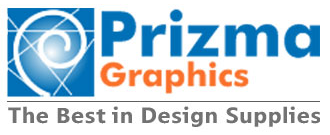HP DesignJet Z6 vs Canon ImagePROGRAF GP-200: which of these 24” wide-format printer options might be best for you?

As regular customers of our store here at Prizma Graphics will know and appreciate, we are not tied to any one manufacturer of large-format printers. This, in turn, means we really are committed to bringing each and every customer of ours the benefit of the most suitable solution for their needs, instead of directing them automatically to a specific Canon or HP wide-format printer.
With all that in mind, you might be in the market right now for a device that would enable you to rapidly print A1 posters and banners, with minimal fuss, and to the highest of standards.
In that case, you might be especially drawn to the idea of investing in a HP DesignJet Z6, or the Canon ImagePROGRAF GP-200. These are both 24”, six-colour printers that have attracted strong reviews on the basis of their operational efficiency and impressive print results – so, what factors might enable you to decide in favour of one of these machines over the other?
The Canon GP-200 ticks all the essential boxes – and then a few more
It’s difficult to argue with the specifications of the Canon ImagePROGRAF GP-200, or the quality of the prints that it makes possible.
The GP-200 certainly operates quickly, with an ability to produce A1 plain-paper prints in a mere 25 seconds on a “Fast” setting. In “Standard” mode, the speed in which a plain-paper print is created is 44 seconds, while in the case of heavy coated paper, the print speed is 55 seconds and one minute, 22 seconds on “Fast” and “Standard” modes respectively.
Closely connected to the matter of speed, however, is ease of use; with its built-in HDD, the Canon GP-200 allows for saved data to be printed conveniently and efficiently. PDF and JPEG files can also be printed from a USB memory stick, without the need to first connect it to a PC.
As for the actual print results, these are every bit as premium and professional-looking as you would expect from Canon. A major highlight of the GP-200 is the fact that it features the Japanese manufacturer’s recently developed fluorescent pink ink – so, if you are specifically seeking out the right printer for the production of head-turning backlit displays and high-impact posters, the Canon might well be your choice.
There are also some other aspects of the Canon GP-200 that help it stand out from its HP Z6 rival. Canon’s online PosterArtist Software allows for the easy creation, and subsequent printing of, professional-looking posters, banners, and flyers. By comparison, although the HP printer does give the user the option of a web-based poster creation app, this app doesn’t have a print function; instead, another application is required for printing.
Then, there is simply the fact that the Canon takes up less space than its HP counterpart, at 892mm wide, compared to 1293mm in the case of the HP wide-format printer.
So, for what reasons might you prefer the HP DesignJet Z6?
For all of the factors that might lead you to opt for the Canon device instead of the HP printer, the latter still impresses on a number of fronts.
It is, for instance, hardly a slouch itself when it comes to print speed, with its ability to work at a pace of 66.9 square metres per hour in the case of plain media. And when it does operate, the HP works to minimise the amount of ink it uses, to save the user from having to replenish it for longer.
Nor are the print results given by this HP wide-format printer exactly shabby. Although, if you prioritise brightness above all else, the Canon machine might still be your choice, the HP Z6 is great at reading details clearly, and it achieves smooth gradients even with challenging colour combinations, courtesy of HP Pixel Control.
Nor is there a need for light inks when you opt for the HP printer, due to the dual drop technology, and HP Vivid Photo Inks allow for the creation of prints that are resistant to water and fading, whether they are displayed indoors or outdoors.
Speed and ease of use are two of the major strengths of the HP DesignJet Z6. The printer’s potent processing architecture and Adobe PDF Print Engine 3 allow for even the most complicated files to be handled, while the integrated vertical trimmer means that maps can be cut to different sizes in only a few steps.
Meanwhile, the 2400 nozzle per-inch, high-definition HP printheads are able to print as much as 20% faster, and the dual roll support and automatic roll switching features allow for less time to be spent on media changes and adjustments.
Have a talk with us to determine the most suitable large-format printer for your needs
Here at Prizma Graphics, we are highly appreciative of the fact that no given customer of ours is likely to be in exactly the same situation as the next. So, you might need some more tailored advice to help you settle on just one 24” Canon or HP wide-format printer.
To receive such advice and guidance, please don’t hesitate to contact our team today, whether by calling 01296 393700, or by sending us an email.
